Physical Address
304 North Cardinal St.
Dorchester Center, MA 02124
Physical Address
304 North Cardinal St.
Dorchester Center, MA 02124
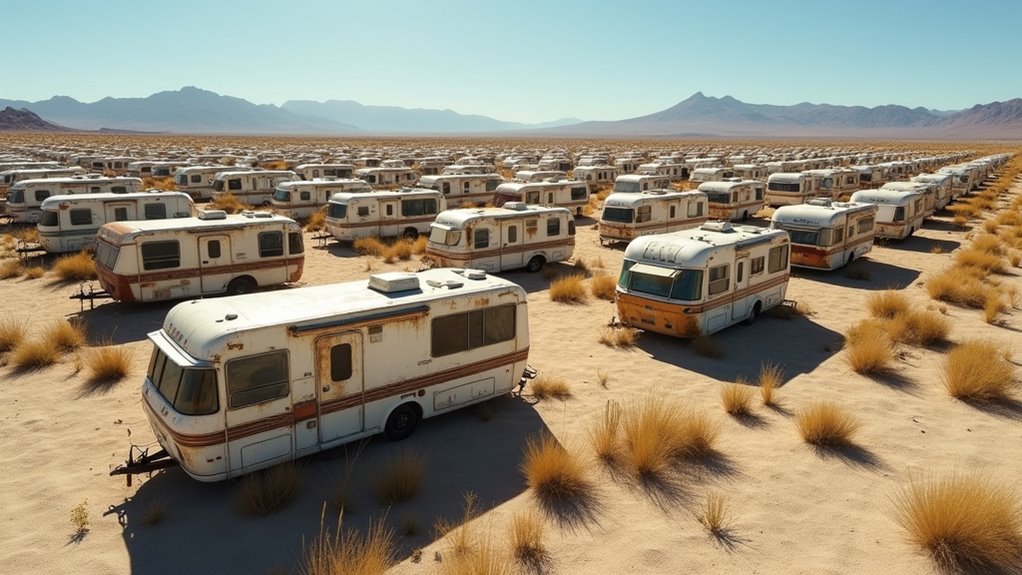
Most unsold RVs face surprising fates that dealers desperately hide from buyers, creating unexpected opportunities for smart shoppers.
You’ve probably driven past RV dealerships packed with rows of gleaming motorhomes and travel trailers, but have you noticed how some seem to sit there month after month? With interest rates climbing and consumer spending tightening, dealers are drowning in unsold inventory that’s costing them serious money every day. What they’re doing to move these RVs might surprise you – and it could mean significant savings if you know where to look.
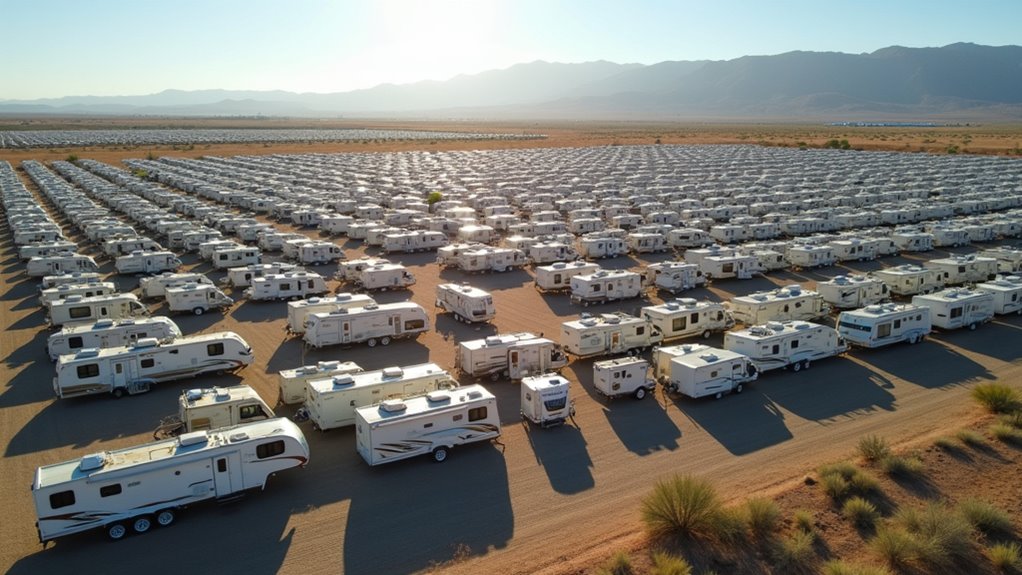
While the RV industry once thrived during the pandemic’s peak, today’s reality paints a starkly different picture that directly affects your wallet if you’re shopping for an RV.
Sales have crashed by 50% since 2021, and prices have dropped 25% – creating a buyer’s market you can capitalize on.
Here’s what’s happening: dealers are drowning in surplus inventory from previous boom years. In response, many are offering aggressive pricing strategies to move units quickly and clear their lots.
They’re desperately reducing stock levels and cutting production to match today’s demand.
RV registrations fell 6.9% in 2024 to 356,518 units, with travel trailers and fifth wheels seeing significant declines.
This inventory crisis means dealers need to move units fast.
You’ll find aggressive pricing, better negotiation room, and more selection than we’ve seen in years. High interest rates around 8% are keeping many potential buyers on the sidelines, further pressuring dealers to negotiate.
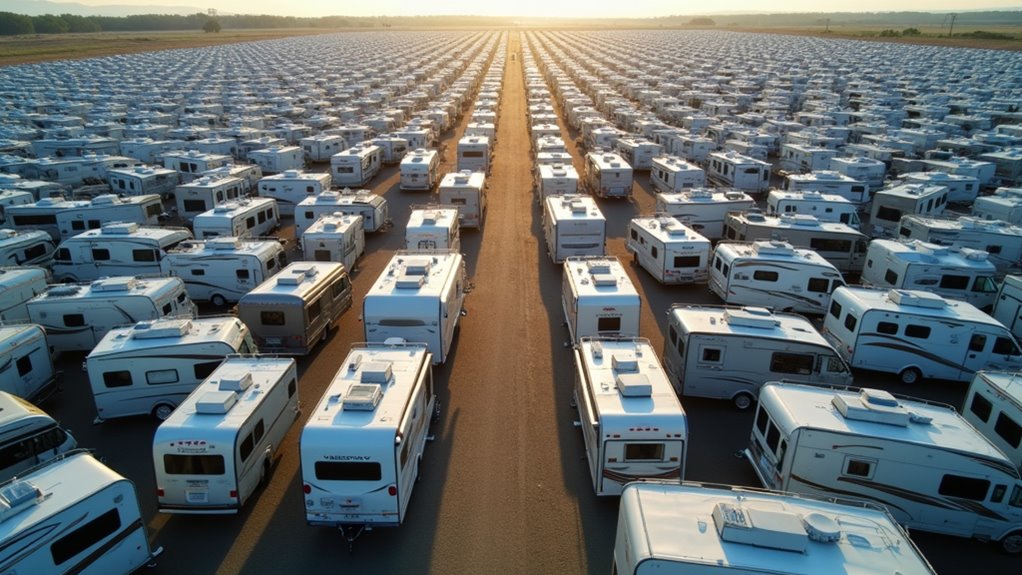
As dealers grapple with record-high inventory levels, they’re deploying sophisticated strategies that directly benefit you as a buyer.
Record-high RV inventory levels are forcing dealers to deploy buyer-friendly strategies that put unprecedented negotiating power in your hands.
They’re using AI-driven inventory management systems to track which RVs aren’t moving and adjusting prices accordingly. You’ll find dealers conducting regular physical audits to identify slow-moving stock that needs aggressive pricing.
Here’s what smart dealers are doing to move inventory:
This inventory crisis means you’ve got unprecedented negotiating power and access to deals. The most successful dealers understand that mastering inventory management is what differentiates them from competitors struggling to move their stock. They also analyze market trends to anticipate upcoming demand shifts, which helps them optimize their stock turnover strategies.
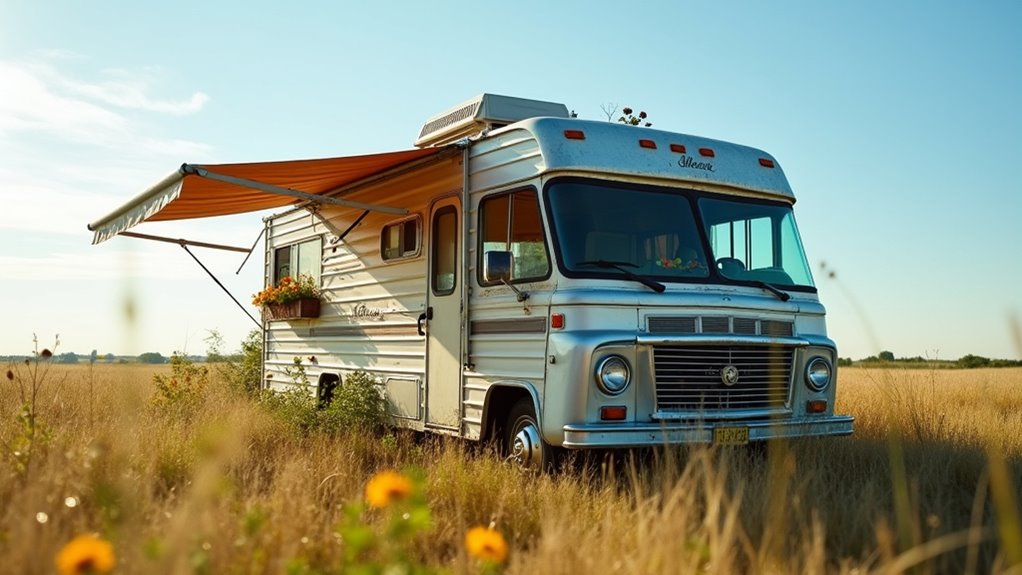
Beyond traditional price cuts and promotions, dealers and manufacturers are getting creative with unsold RVs in ways that could open up new opportunities for you.
You’ll find renovated units hitting online platforms and auction houses at considerably reduced prices – some with upgrades costing just $650 to $1,600. These refreshed RVs often feature new paint and reupholstered interiors, making them attractive budget options.
You can also explore rental-to-own programs or lease arrangements if you’re hesitant about purchasing outright. Many dealers are bypassing traditional sales models entirely, offering direct-to-consumer deals.
Plus, specialized dealers focusing on older models provide niche opportunities for budget-conscious buyers. Some units are even repurposed as glamping accommodations or mobile offices, creating unique purchasing possibilities you wouldn’t find elsewhere. With towable prices continuing to decline for six consecutive months, these alternative sales channels become even more attractive for value-seeking buyers, especially as the market evolves.

When unsold RV inventory floods the market, it doesn’t just affect new vehicle pricing—it creates a domino effect that’ll directly impact your RV’s resale value and reshape the entire secondary market.
You’re facing a perfect storm where discounted new inventory competes directly with used RVs. Wholesale auction values for towables dropped 4.1% recently, while older unsold models get dumped into secondary markets at steep discounts. The industry is still working through surplus inventory from pandemic-era overproduction that continues to weigh down market values.
Discounted new RV inventory flooding secondary markets creates direct competition with used models, driving down wholesale values across all categories.
Here’s what’s happening to your RV’s value:
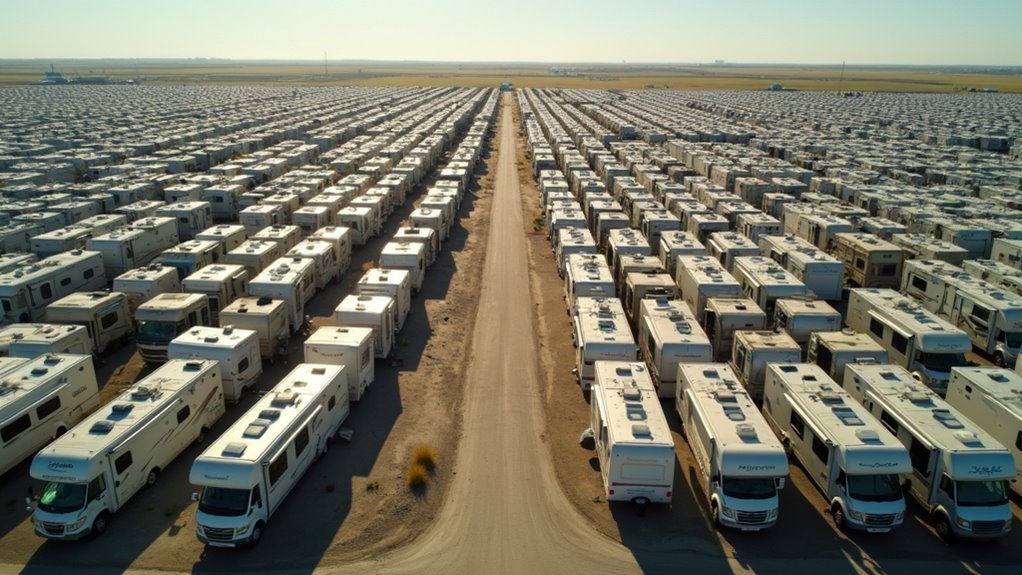
While manufacturers grapple with declining shipments and mounting inventory costs, the financial squeeze they’re experiencing will fundamentally reshape how the entire RV industry operates—and that directly affects the deals you’ll find and the companies you’ll buy from.
Companies like Thor Industries are reporting losses, forcing immediate changes. You’ll see manufacturers cutting production volumes and adjusting pricing strategies to move excess inventory.
They’re diversifying product lines to appeal to broader markets and investing in innovative marketing to attract hesitant buyers. Rising interest rates are prompting innovation in RV financing options as companies adapt to changing market conditions.
This financial pressure creates opportunities for you. Dealers are optimizing sales channels and adjusting prices to clear inventory.
Smart manufacturers are maintaining safety margins while preparing for anticipated interest rate drops that could boost demand.
The industry’s adapting—and you’ll benefit from their urgency to sell.
Picture yourself walking through dealer lots where gleaming RVs sit with bold “CLEARANCE” tags fluttering in the breeze. You’re witnessing an industry transformation that’s creating unexpected opportunities for savvy buyers like you. While manufacturers scramble to clear inventory mountains, you can snag incredible deals on luxury models that once seemed out of reach. Don’t let this market upheaval intimidate you—embrace it as your chance to finally afford that dream RV adventure.